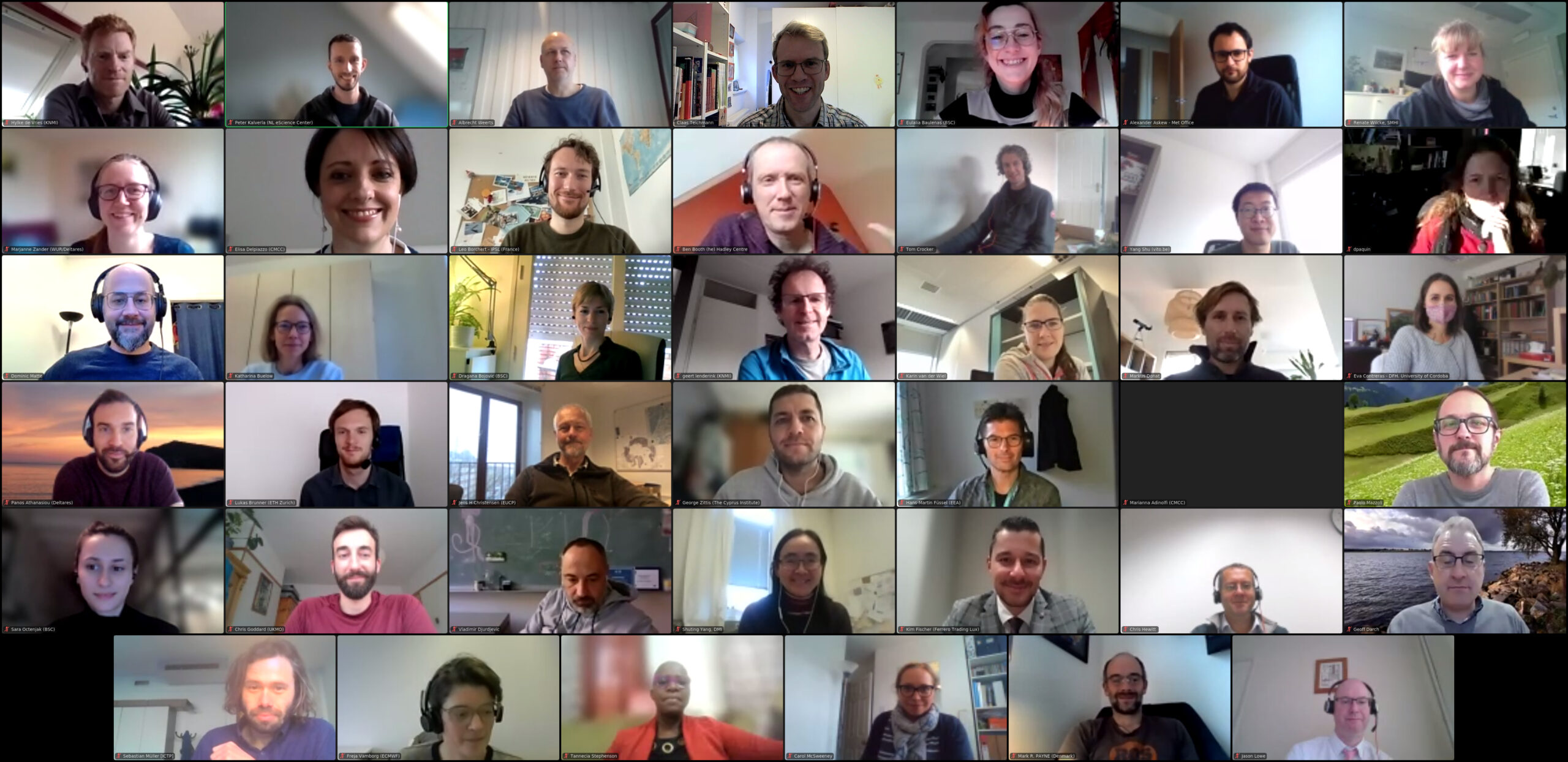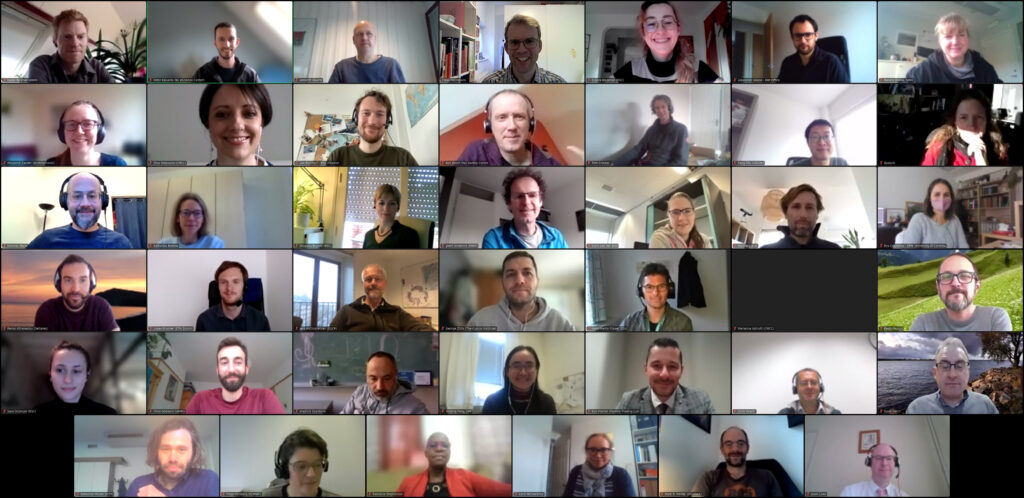On November 24th 2021, we held the latest instalment in our series of workshops with our Multi-User Forum. This forum gathers climate information users and lets them talk directly with climate scientists. Among the attendees were representatives from many different sectors including agriculture, water supply and urban planning. This collaboration helps users shape the climate prediction system at the core of EUCP, ensuring it meets their needs and is as useful and usable as possible.
The goal of this workshop was to present new EUCP products to users and discuss their usability. Almost 50 participants joined in learning about EUCP breakthroughs, including improved decadal climate predictions, new methods for merging climate projections on different timescales, and the first pan-European ensemble of high-resolution convection-permitting climate models (CPMs). The latter are particularly useful for simulating extreme climatic events.
New advances in EUCP’s climate science and data infrastructure were presented in the form of ‘storyboards’, each illustrating to users the benefits of a key result or product from the EUCP project. For example, one storyboard covers work led by Marjanne Zander on convection-permitting models, like the ones mentioned above. The team used these models to simulate flash flooding in the Alps under a warmer future climate, finding that although the frequency of these events is set to fall in the summer months, extremes will be more severe. Autumn extremes will also be more severe, but here the frequency is set to increase as well.
Delegates had the opportunity to pose questions directly to the scientists involved in each storyboard on their work, its usability, and further developments. This yielded key insights into different users’ perspectives, such as how (un)comfortable they are with technical language and complex datasets. The discussions also highlighted how important it is to merge information from multiple lines of evidence into a single, coherent output.
Within small breakout groups there were discussions about the EUCP products from the perspectives of business and adaptation strategies, raising the need to align the science with the required output, and users’ desire for concise explanations of the main parts of the EUCP legacy. Users found the storyboards helpful and made a number of suggestions to help EUCP develop them further to widen their audience. This will prove very useful in refining EUCP’s web platform for storyboards ahead of its full release. In the meantime, more feedback is always welcome.
We are already looking forward to our third Multi-User Forum workshop next year, when we will see the benefits of these insights and suggestions.





 Funded by the European Union under Horizon 2020.
Funded by the European Union under Horizon 2020.